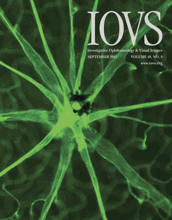Abstract
PURPOSE: Vernier displacement thresholds can be measured with swept-parameter visual evoked potentials (sVEPs) and may therefore be useful in pre- or nonverbal subjects. This study was conducted to test whether sVEP vernier thresholds are valid measures of the visibility of vernier offsets in two different settings.
METHODS: Vernier acuity thresholds were measured psychophysically and electrophysiologically using square-wave gratings containing vernier displacements modulated at 3.76 Hz. The detectability of the vernier alignment cue was degraded by introducing either gaps or standing offsets in the stimulus. These manipulations were performed in normal-vision observers. In a second experiment, psychophysical and sVEP vernier acuity were measured in amblyopic observers.
RESULTS: sVEP thresholds and overall amplitudes in normal observers were strongly affected by the introduction of gaps or standing offsets, as were psychophysical thresholds. Psychophysical and sVEP vernier offset thresholds were significantly correlated in the amblyopic eyes, as were sVEP and optotype interocular threshold differences. sVEP amplitudes of patients with strabismus were lower than those of patients with anisometropic amblyopia, even though optotype acuities were the same in the two groups.
CONCLUSIONS: Vernier acuity thresholds derived from the sVEP tap mechanisms that are specific for the relative position of stimulus elements, and they correlate with perceptual visibility in normal and amblyopic observers. Because of this correlation and because sVEP thresholds can be measured without the need for instruction or behavioral responses, they may be useful in assessing visual function in pre- and nonverbal patients.

